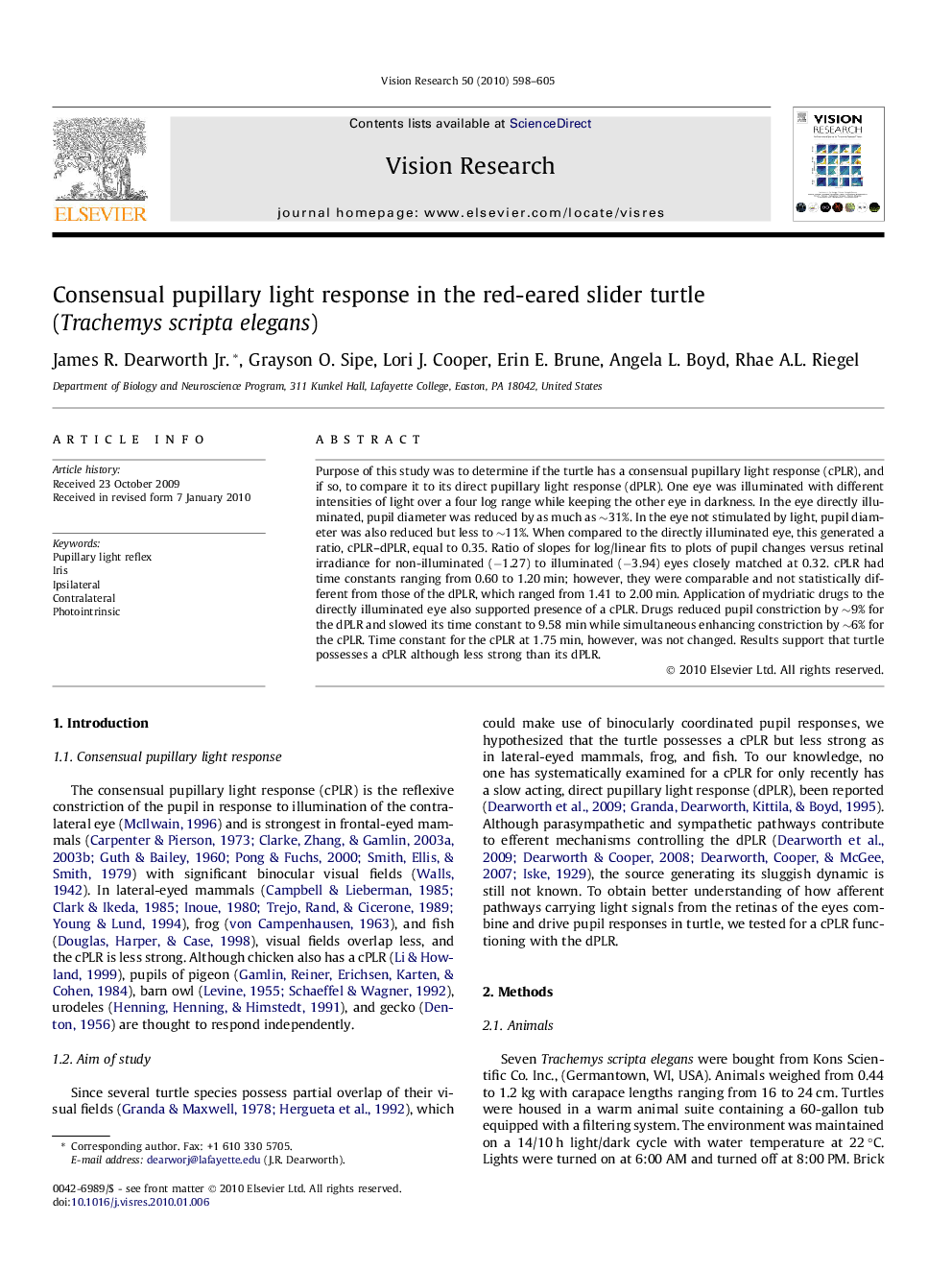| Article ID | Journal | Published Year | Pages | File Type |
|---|---|---|---|---|
| 4034487 | Vision Research | 2010 | 8 Pages |
Purpose of this study was to determine if the turtle has a consensual pupillary light response (cPLR), and if so, to compare it to its direct pupillary light response (dPLR). One eye was illuminated with different intensities of light over a four log range while keeping the other eye in darkness. In the eye directly illuminated, pupil diameter was reduced by as much as ∼31%. In the eye not stimulated by light, pupil diameter was also reduced but less to ∼11%. When compared to the directly illuminated eye, this generated a ratio, cPLR–dPLR, equal to 0.35. Ratio of slopes for log/linear fits to plots of pupil changes versus retinal irradiance for non-illuminated (−1.27) to illuminated (−3.94) eyes closely matched at 0.32. cPLR had time constants ranging from 0.60 to 1.20 min; however, they were comparable and not statistically different from those of the dPLR, which ranged from 1.41 to 2.00 min. Application of mydriatic drugs to the directly illuminated eye also supported presence of a cPLR. Drugs reduced pupil constriction by ∼9% for the dPLR and slowed its time constant to 9.58 min while simultaneous enhancing constriction by ∼6% for the cPLR. Time constant for the cPLR at 1.75 min, however, was not changed. Results support that turtle possesses a cPLR although less strong than its dPLR.
